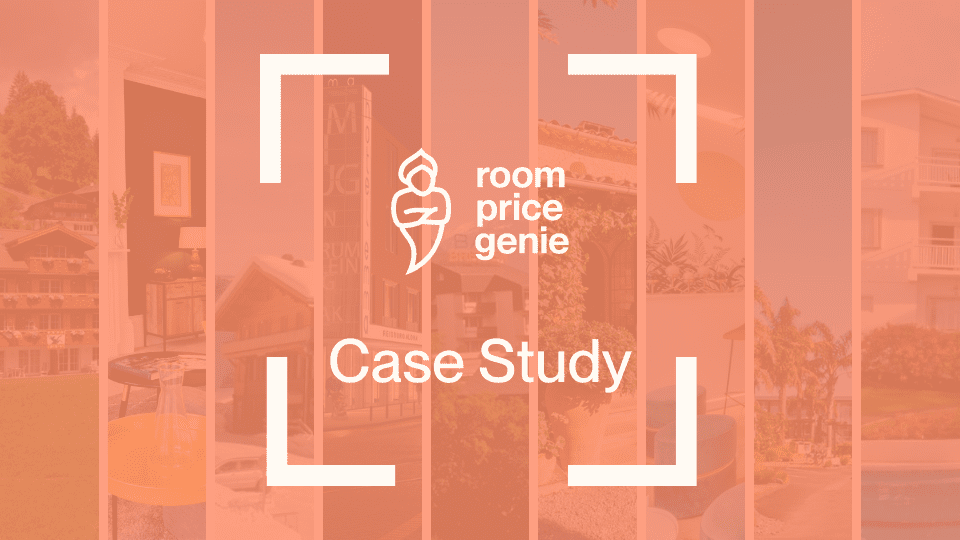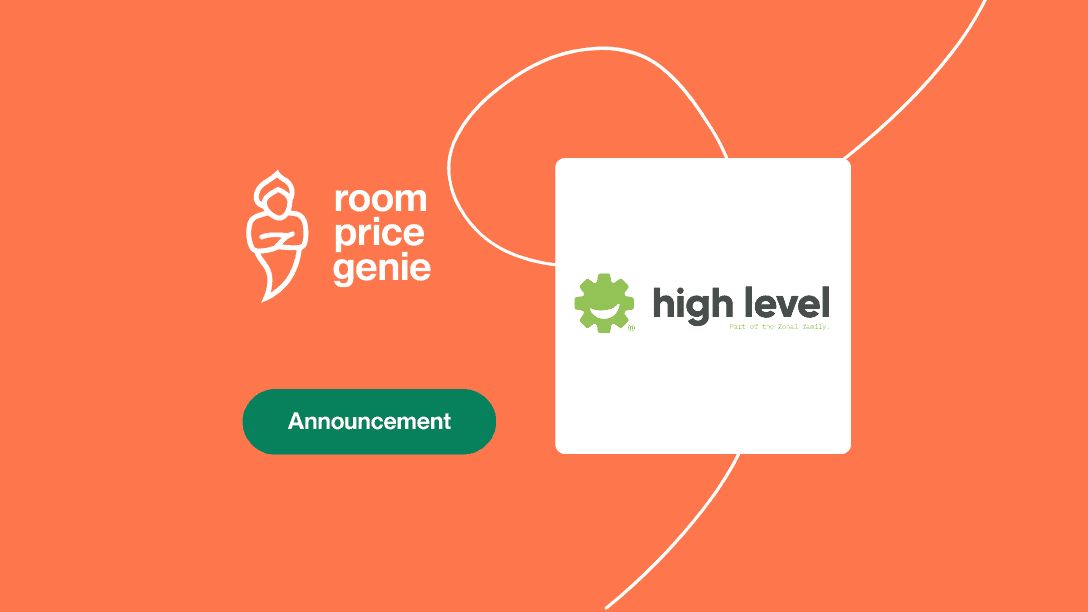- Solutions
Boost your revenue by 22% and save time with our easy-to-use, automated room pricing solution.
It’s fast to implement, intuitive to use, simple to understand and completely transparent.
- Case Studies
Hear from some of our wonderful clients

Case Study – Exactly How Much Extra Revenue Does a Revenue Management System Make?
- Pricing
- Integrations
- Resources
Welcome to our comprehensive content library, your go-to destination for a wealth of diverse and informative resources.
Don’t miss out on our hotel technology video-course academy – get free access for 2 weeks now.
Meet the Genies live in person or online.
See what we have planned for our product improvements.
- Company
Find out about us and what makes us tick.
Meet our amazing team of Genies.
Join our happy, motivated and growing remote-first team.
Working with RoomPriceGenie means happy clients and real partnership.
Our innovation has been recognised across the industry.

High Level Software and RoomPriceGenie announce global partnership
Revenue Management Glossary
Forecast
Definition
A forecast is a very valuable tool for revenue managers and hoteliers, as it is used to predict future demand, revenue, occupancy and other key performance metrics, over a set period of time. Forecasts combine historical data, market analysis, booking trends, and advanced analytics to provide accurate and actionable insights which help hoteliers develop more effective revenue management strategies, create more accurate budgets and make data-based decisions about staffing and other operational planning.
How to use it
The key elements of a forecast are:
1 - Occupancy Forecast Predicts the percentage of available rooms that will be occupied over a specific period. This information is useful for future planning on operational issues, including staffing, housekeeping, etc.
2 - Revenue Forecast Estimates future revenue based on expected room sales, average daily rate (ADR) and other non-room revenue streams, including food and beverage, spa services, events, etc. This information is particularly useful in budgeting and developing accurate revenue management strategies.
3 - Demand Forecast Estimates the number of guests and/or room nights expected at the property over a set period of time. This information is useful in establishing more accurate rates, as it acts as a reflection of upcoming market demand.
4 - ADR Forecast Estimates the average rate at which rooms will be sold over a set period of time, which is useful for setting pricing strategies which maximise RevPAR.
5 - RevPAR Forecast Predicts revenue generated per available room, combining occupancy and ADR. This information is a key indicator of the hotel's overall performance and profitability.
1 - Occupancy Forecast Predicts the percentage of available rooms that will be occupied over a specific period. This information is useful for future planning on operational issues, including staffing, housekeeping, etc.
2 - Revenue Forecast Estimates future revenue based on expected room sales, average daily rate (ADR) and other non-room revenue streams, including food and beverage, spa services, events, etc. This information is particularly useful in budgeting and developing accurate revenue management strategies.
3 - Demand Forecast Estimates the number of guests and/or room nights expected at the property over a set period of time. This information is useful in establishing more accurate rates, as it acts as a reflection of upcoming market demand.
4 - ADR Forecast Estimates the average rate at which rooms will be sold over a set period of time, which is useful for setting pricing strategies which maximise RevPAR.
5 - RevPAR Forecast Predicts revenue generated per available room, combining occupancy and ADR. This information is a key indicator of the hotel's overall performance and profitability.
Formula
N/A
Related Terms
ADR, RevPAR, Occupancy, Revenue Management, Revenue Management Strategy, Dynamic Pricing, RMS, Revenue Management System
“There are so many benefits to using forecasting to support your pricing and distribution strategy, including more accurate strategic pricing recommendations, improved operational efficiency, more accurate financial planning, the ability to develop more strategic/targeted marketing campaigns to boost ROI on your marketing spend, and more effective long-term strategic planning. As you can see, there is no downside for your property in implementing an automated pricing solution to create more effective forecasts and improve your property’s overall profitability.”
José Miranda


